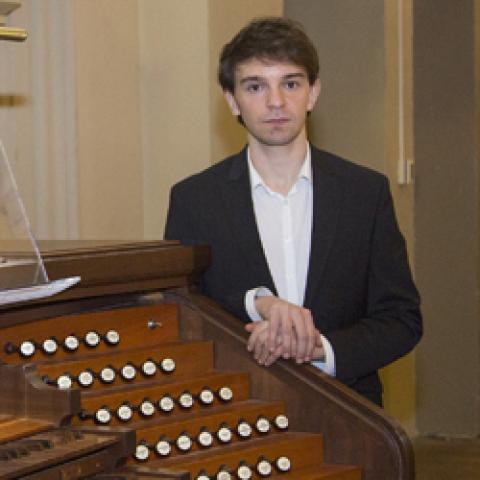
Pierre Queval, a recent graduate of the master’s program at the Conservatoire de Paris (CNSMDP), has been named the 2015–16 Young Artist in Residence at the Cathedral-Basilica of St. Louis, King of France in New Orleans, Louisiana. At the Paris Conservatory, Queval was an organ student of Michel Bouvard and Olivier Latry; he studied improvisation with Thierry Escaich, Laszlo Fassang, Philippe Léfèbvre, and Jean-François Zygel. In 2014, he received a bachelor’s degree in improvisation. In 2013, he received his diploma in counterpoint, in the class of Pierre Pincemaille. Prior to his studies at the Paris Conservatory, he graduated from the conservatories of Nantes and Saint-Maur-des-Fossés, where he studied organ and improvisation with Michel Bourcier, Eric Lebrun, and Pierre Pincemaille.
Organiste Titulaire of the Cavaillé-Coll/Haerpfer-Ermann organ at Saint-Ignace in Paris (since 2014), assistant organist of the historic Debierre organ at Notre-Dame-de-Bon-Port in Nantes (since 2007), Pierre Queval performs recitals all across France. He performs regularly in Paris (at churches including Notre-Dame, Saint-Eustache, La Trinité, Saint-Sulpice, and Saint-Séverin) and has been invited to perform at many festivals in France, including Radio France Montpellier/Languedoc-Roussillon, Festival de la Chaise-Dieu, and Toulouse les Orgues.
As an accompanist, Pierre Queval plays with several different vocal ensembles and with many different vocal and instrument soloists. With singer Ellen Giacone, he recently recorded a CD devoted to sacred music of the 19th and 20th centuries. Queval also recently founded a trio with flautist Charlotte Berthomé and violinist Mathilde Gandar. The Young Artist in Residence program is funded by the Elise Murray Cambon Memorial Trust. As part of that program, Queval will appear in recital throughout Louisiana.



